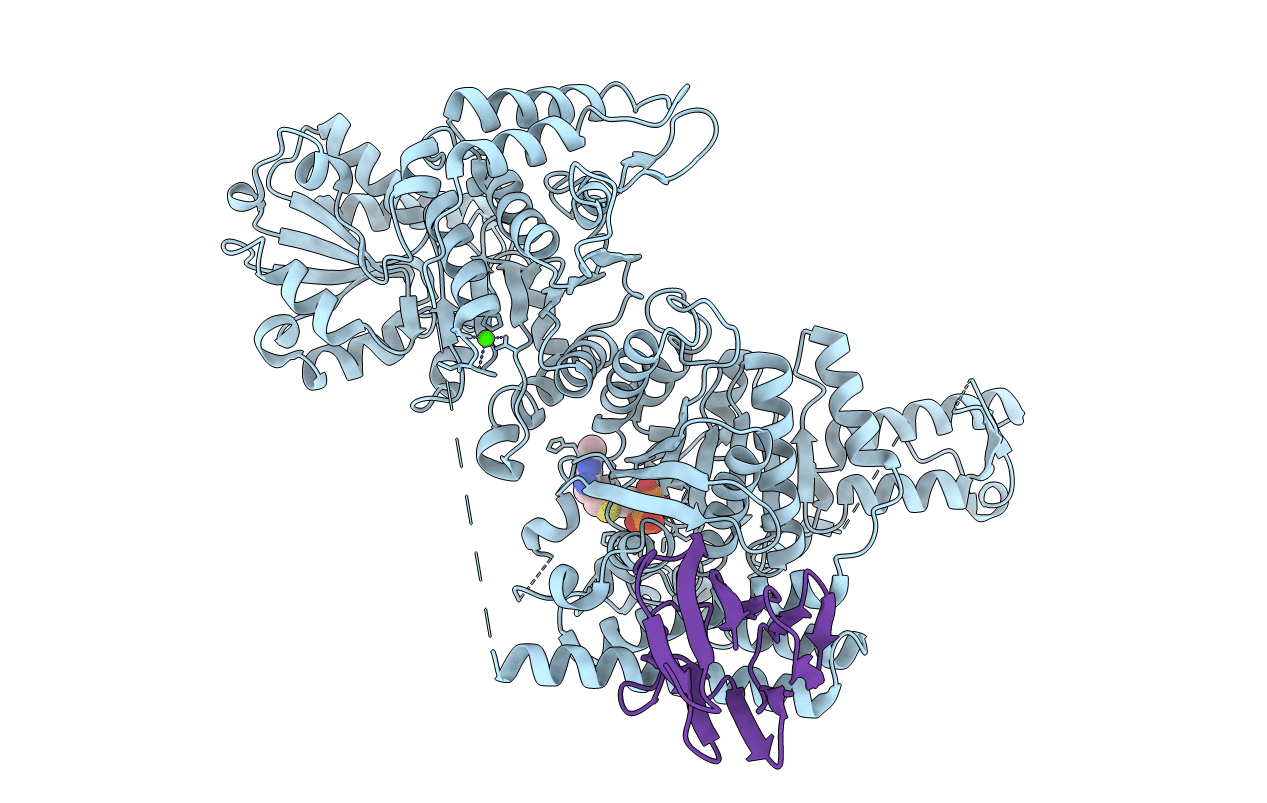
Deposition Date
2018-11-01
Release Date
2019-05-22
Last Version Date
2024-01-24
Entry Detail
PDB ID:
6I2Q
Keywords:
Title:
Crystal structure of the wild-type SucA domain of Mycobacterium smegmatis KGD (alpha-ketoglutarate decarboxylase), in complex with GarA
Biological Source:
Source Organism:
Host Organism:
Method Details:
Experimental Method:
Resolution:
2.15 Å
R-Value Free:
0.19
R-Value Work:
0.16
R-Value Observed:
0.16
Space Group:
C 2 2 21


